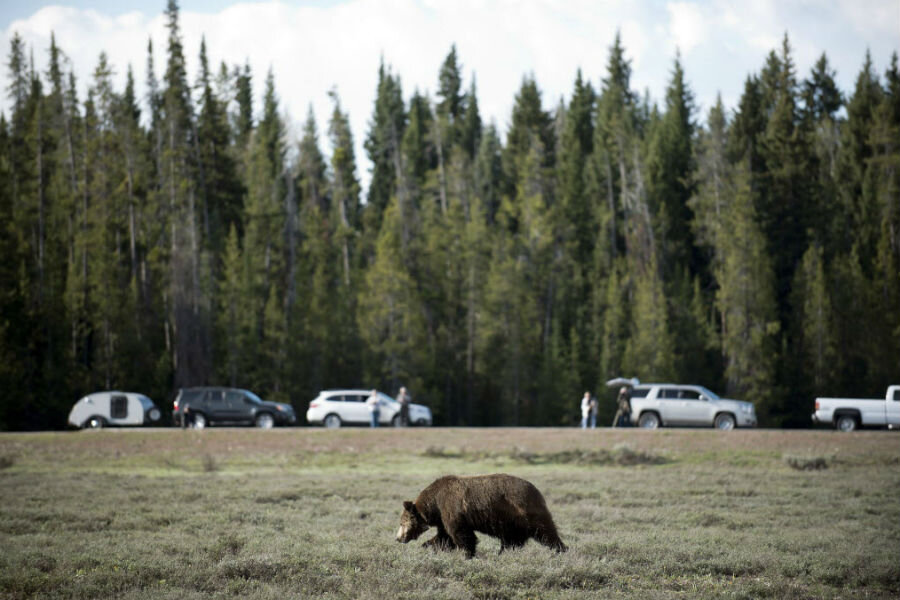Bear kills bicyclist in Montana: Why are grizzly attacks on the rise?
Loading...
A deadly encounter between a grizzly bear and a bicyclist Wednesday afternoon marked the seventh grizzly fatality in the Northern Rockies since 2010.
Brad Treat, a law enforcement officer with the US Forest Service, encountered the bear while mountain biking just south of Glacier National Park in Montana.
Grizzly-related deaths are very rare in Glacier National Park: Mr. Treat was only the eleventh victim of a fatal bear attack there in more than 100 years. However, six other fatal attacks have taken place in the Yellowstone National Park area since 2010.
Numbers suggest that attacks by both grizzlies and black bears are on the rise in North America. While black bear fatalities remain rare, researchers say, maulings and other aggressive incidents have become more common.
The increase is "a function of more people coming into contact" with bears, says John Beecham, a research biologist who spent 29 years with the Idaho Game and Fish Department.
"We have more people, we have more bears, and we have more people living in bear habitat," Dr. Beecham told National Geographic. "That's a big part of what we're dealing with."
To prevent attacks, people living in areas with large or growing bear populations should be properly educated on the risks of living among bears and how to peacefully co-exist, ursinologists say.
In one study entitled "Human behaviour can trigger large carnivore attacks in developed countries," researchers emphasized that the media has a tendency to "overplay" such attacks with sensational language and graphic photos, leading to "increased fear and negative attitudes towards coexisting with and conserving these species."
In reality, while on the rise, such incidents are still extremely rare.
As the Christian Science Monitor's Jessica Mendoza reported in August:
In general, fatal bear attacks are rare. From 1980 to 2011, about 90 million people visited Yellowstone, the National Park Service estimates. In that same period, 43 people were injured by bears in the park. Grizzly attacks on humans are even less common, averaging about 1 incident every 11 years for visitors who stay in the park’s developed areas and about 1 a year in backcountry areas.
In the event that you do encounter a bear, determine whether the bear is on the offensive ("moving purposefully toward you") or defensive (a bear that "you have surprised") before acting, according to the Montana Fish, Wildlife and Parks guidelines.
It's rare that a bear is offensive, but in these cases, it's best to wave your arms and make loud noises before the bear makes contact. If it attacks, fight it off to the best of your ability.
With a defensive bear, play dead until the bear leaves by dropping to the ground, lying flat, and protecting your head.
Above all, experts say, stay calm.








